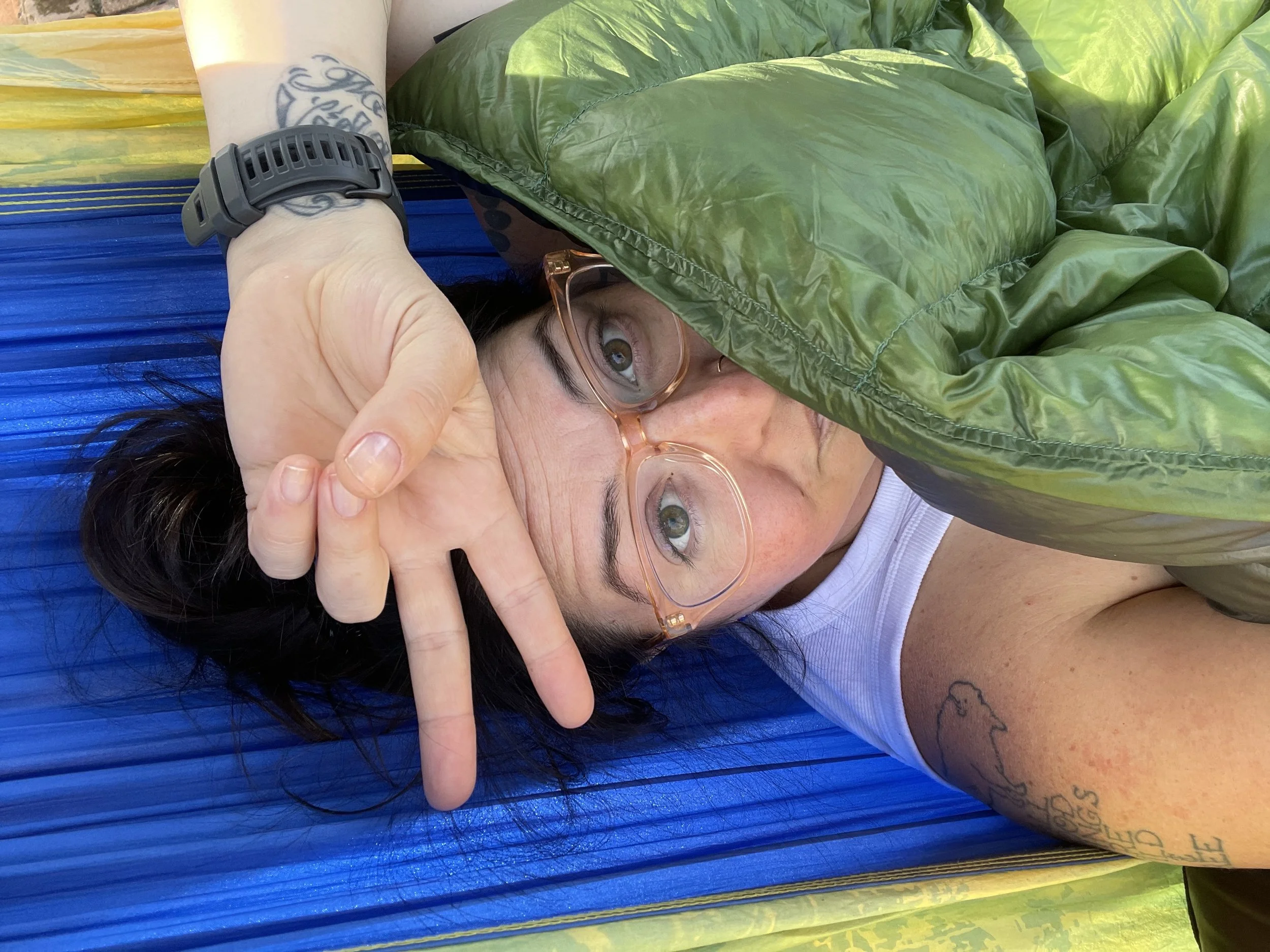Gear Talk: Sleeping Bags
A Comprehensive Comparison
Down Vs Synthetic
Sleeping Bags
A Comprehensive Comparison of Down vs. Synthetic Sleeping Bags
When it comes to outdoor adventures, a good night's sleep is crucial, and choosing the right sleeping bag can make all the difference. The two main types of sleeping bags are down and synthetic, each with its own set of advantages and disadvantages. In this post, we'll delve into the differences in packability, weight, warmth, and price - and provide some recommendations for quality brands and models.
Down Sleeping Bags
Packability: Down sleeping bags are highly compressible, making them ideal for backpacking where space is at a premium. They can be squeezed into very small spaces in your pack, then fluff back up when unpacked.
Weight: They are typically lighter than synthetic bags, contributing to less overall backpack weight, which is a significant advantage on longer treks.
Warmth: Down is known for its exceptional warmth-to-weight ratio. It insulates extremely well and is perfect for colder conditions. However, its insulating capability diminishes significantly when wet.
Price: Down sleeping bags tend to be more expensive. This is due to the cost of high-quality down and the more complex manufacturing processes.
Our Recommendations:
Best Budget Rec - Kelty Cosmic 20: Great for a first trip! Lightweight and warm, a Kelty Cosmic 20 weighs in at 32.5oz. ($180)
Enlightened Equipment Quilts: Ultralight Fan Favorite. A 0-degree Regular Revelation Quilt weighs in at just over 29oz. ($395)
Mountain Hardwear Phantom: A popular choice for its lightweight and warmth. A 15-degree Regular Phantom weighs in at 33.2oz. ($582)
Katabatic Quilts: Award-winning, warm, ultralight. A Flex 15-degree quilt weighs in at 26.8 oz ($385)
Synthetic Sleeping Bags
Packability: While improvements have been made, synthetic bags are generally less compressible than down. They take up more space in your backpack, which can be a consideration for space-conscious travelers.
Weight: Synthetic bags are usually heavier. However, for car camping or short trips, this might not be a significant issue.
Warmth: They provide consistent insulation even when wet, making them a reliable choice in damp conditions or humid climates.
Price: Synthetic bags are more budget-friendly. They offer a good balance of performance and cost, especially for casual or beginner hikers.
Our Recommendations:
Sea To Summit Traverse: Quality brand, quality product. The Traverse 15-degree weighs in at 50.8 oz. ($249)
The North Face Cat's Meow: A great all-around option with a balance of warmth, weight, and cost. A 20-degree Regular Cat’s Meow weighs in at 43.4 oz. ($179)
Marmot Trestles 15: Well-known for its durability and suitability for wet conditions. A 15-degree Regular weighs in at 54.1 oz. ($119)
So, Which One to Choose?
Your choice between down and synthetic depends on various factors:
Climate and Conditions: For dry, cold conditions, down is superior. In wet or humid conditions, synthetic is more reliable.
Activity Type: For backpacking where weight and space are critical, down might be the better option. For camping trips where these factors are less critical, synthetic can be a great choice.
Budget: If cost is a significant factor, synthetic bags offer a more economical choice.
Personal Preference: Some people prefer the feel of one type over the other, so personal comfort is also a consideration.
Both down and synthetic sleeping bags have their place in the backpacker’s and camper's gear list. By considering your specific needs and the conditions you expect to encounter, you can choose the right sleeping bag for a comfortable, restful night under the stars. Remember, the right sleeping bag can be a worthy investment for many adventures to come. Have specific questions or want to know what we use? Contact us!

